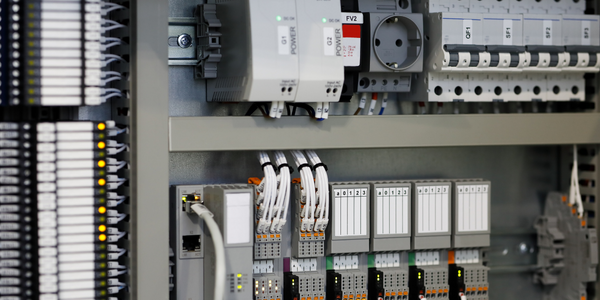Download PDF
Herman Miller: A Case Study in Digital Design and IoT Integration
Technology Category
- Analytics & Modeling - Computer Vision Software
- Robots - Collaborative Robots
Applicable Industries
- Buildings
- Retail
Applicable Functions
- Product Research & Development
- Sales & Marketing
Use Cases
- Experimentation Automation
- Time Sensitive Networking
Services
- Testing & Certification
The Challenge
Herman Miller, a globally recognized furniture design company, was facing a unique challenge. Despite having a strong design heritage and a brand that is synonymous with iconic furniture designs, the company was struggling to translate this design prowess into the digital realm. The company's brand and product teams were tightly integrated, producing significant works with small teams. However, the company had more designers than developers building digital products, a rarity in enterprise businesses today and a reversal of the usual designer-to-engineer ratio. This imbalance was creating a bottleneck in the development of digital products. The company was also working towards adding more in-house software engineering expertise with the goal of fully integrated product and platform teams. The challenge was to maintain the company's strong design heritage while transitioning into the digital space.
About The Customer
Herman Miller is a globally recognized furniture design company, founded in 1905 and headquartered in Zeeland, Michigan. The company is known for its iconic designs, such as the Eames, Aeron, and Mirra chairs, Nelson Bubble Lamps, and many more. The company employs around 3,500 people and operates in the retail industry. Herman Miller's brand and product teams are tightly integrated, and they produce big works with small teams. The company's design team emphasizes collaboration and respect for the company's design heritage, which helps ensure a strong brand vision.
The Solution
Herman Miller adopted a process-oriented approach to tackle this challenge. The process began with initial design and customer research to understand the problem. This was followed by a project brief and a discovery meeting with stakeholders to define the goals, KPIs, and the work to be done. The team then held a project kickoff meeting to establish review dates, expected deliverables, and assignments. In cases where projects were big and there were more unknowns, the team would run a design sprint. The smaller project team would then create content and wireframes, iterating on comps and copy until after each design review. The team also tracked time on all projects to get better at estimating time and resources for new projects, and to make a strong case to management when new hires were needed. The design team and stakeholders would then review InVision prototypes, followed by a build-out with developers, usability testing, and finally, launch and monitor KPI performance.
Operational Impact
Related Case Studies.

Case Study
Energy Saving & Power Monitoring System
Recently a university in Taiwan was experiencing dramatic power usage increases due to its growing number of campus buildings and students. Aiming to analyze their power consumption and increase their power efficiency across 52 buildings, the university wanted to build a power management system utilizing web-based hardware and software. With these goals in mind, they contacted Advantech to help them develop their system and provide them with the means to save energy in the years to come.

Case Study
Intelligent Building Automation System and Energy Saving Solution
One of the most difficult problems facing the world is conserving energy in buildings. However, it is not easy to have a cost-effective solution to reduce energy usage in a building. One solution for saving energy is to implement an intelligent building automation system (BAS) which can be controlled according to its schedule. In Indonesia a large university with a five floor building and 22 classrooms wanted to save the amount of energy being used.

Case Study
Improving Production Line Efficiency with Ethernet Micro RTU Controller
Moxa was asked to provide a connectivity solution for one of the world's leading cosmetics companies. This multinational corporation, with retail presence in 130 countries, 23 global braches, and over 66,000 employees, sought to improve the efficiency of their production process by migrating from manual monitoring to an automatic productivity monitoring system. The production line was being monitored by ABB Real-TPI, a factory information system that offers data collection and analysis to improve plant efficiency. Due to software limitations, the customer needed an OPC server and a corresponding I/O solution to collect data from additional sensor devices for the Real-TPI system. The goal is to enable the factory information system to more thoroughly collect data from every corner of the production line. This will improve its ability to measure Overall Equipment Effectiveness (OEE) and translate into increased production efficiencies. System Requirements • Instant status updates while still consuming minimal bandwidth to relieve strain on limited factory networks • Interoperable with ABB Real-TPI • Small form factor appropriate for deployment where space is scarce • Remote software management and configuration to simplify operations

Case Study
Powering Smart Home Automation solutions with IoT for Energy conservation
Many industry leaders that offer Smart Energy Management products & solutions face challenges including:How to build a scalable platform that can automatically scale-up to on-board ‘n’ number of Smart home devicesData security, solution availability, and reliability are the other critical factors to deal withHow to create a robust common IoT platform that handles any kind of smart devicesHow to enable data management capabilities that would help in intelligent decision-making







